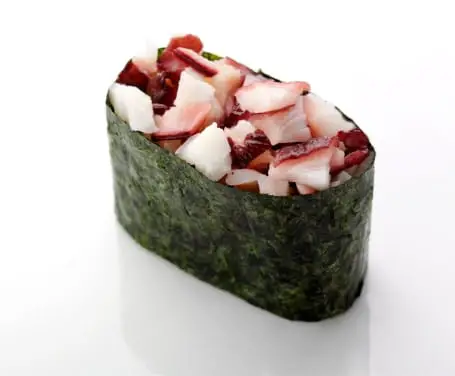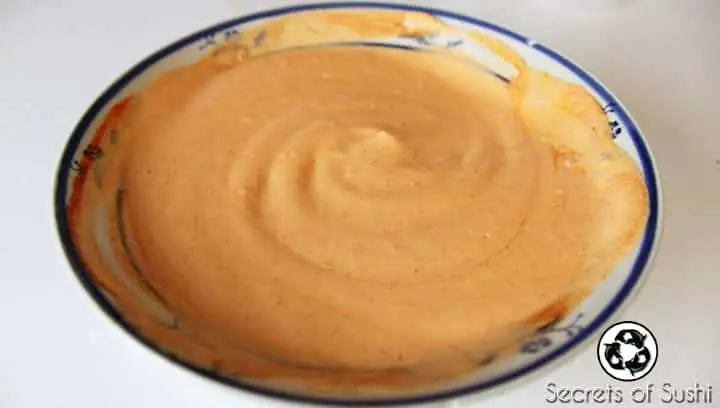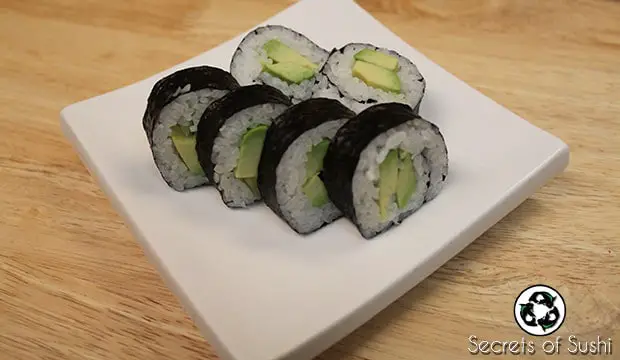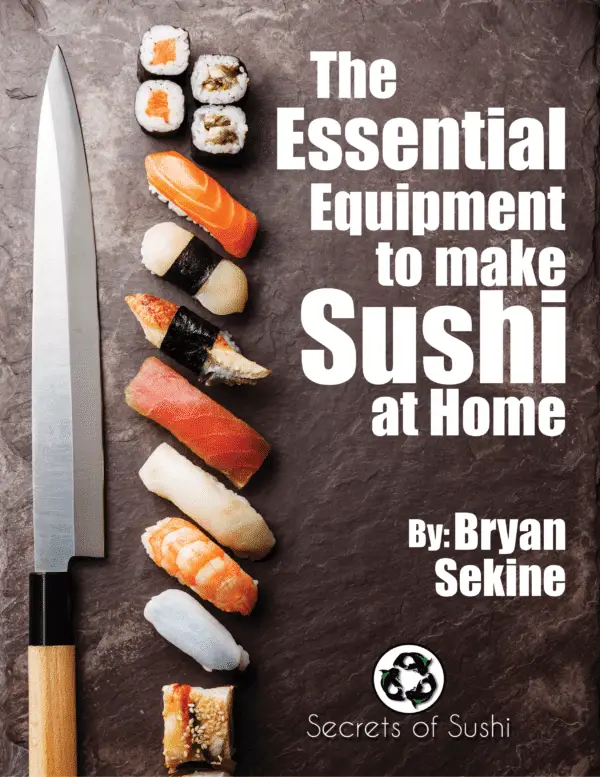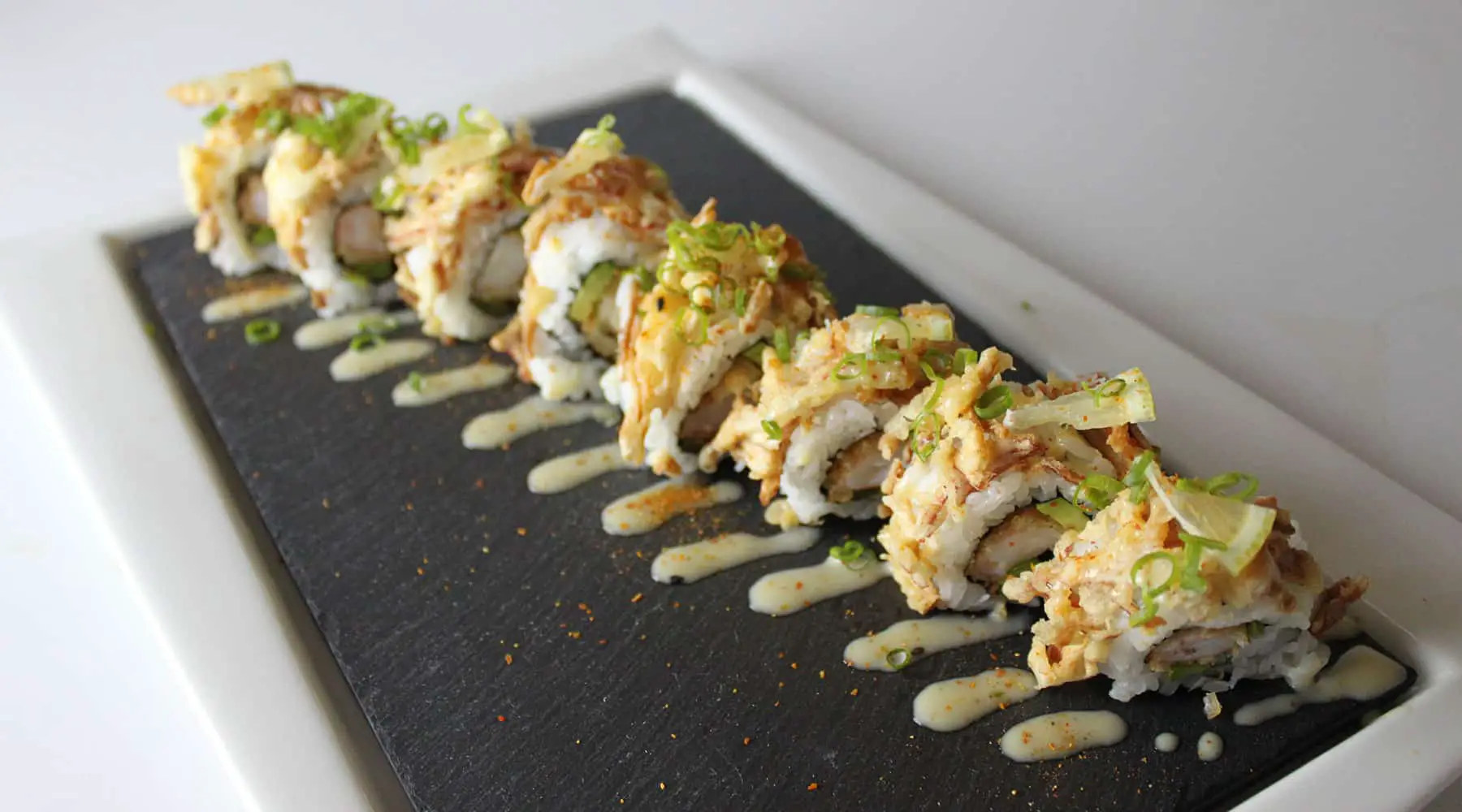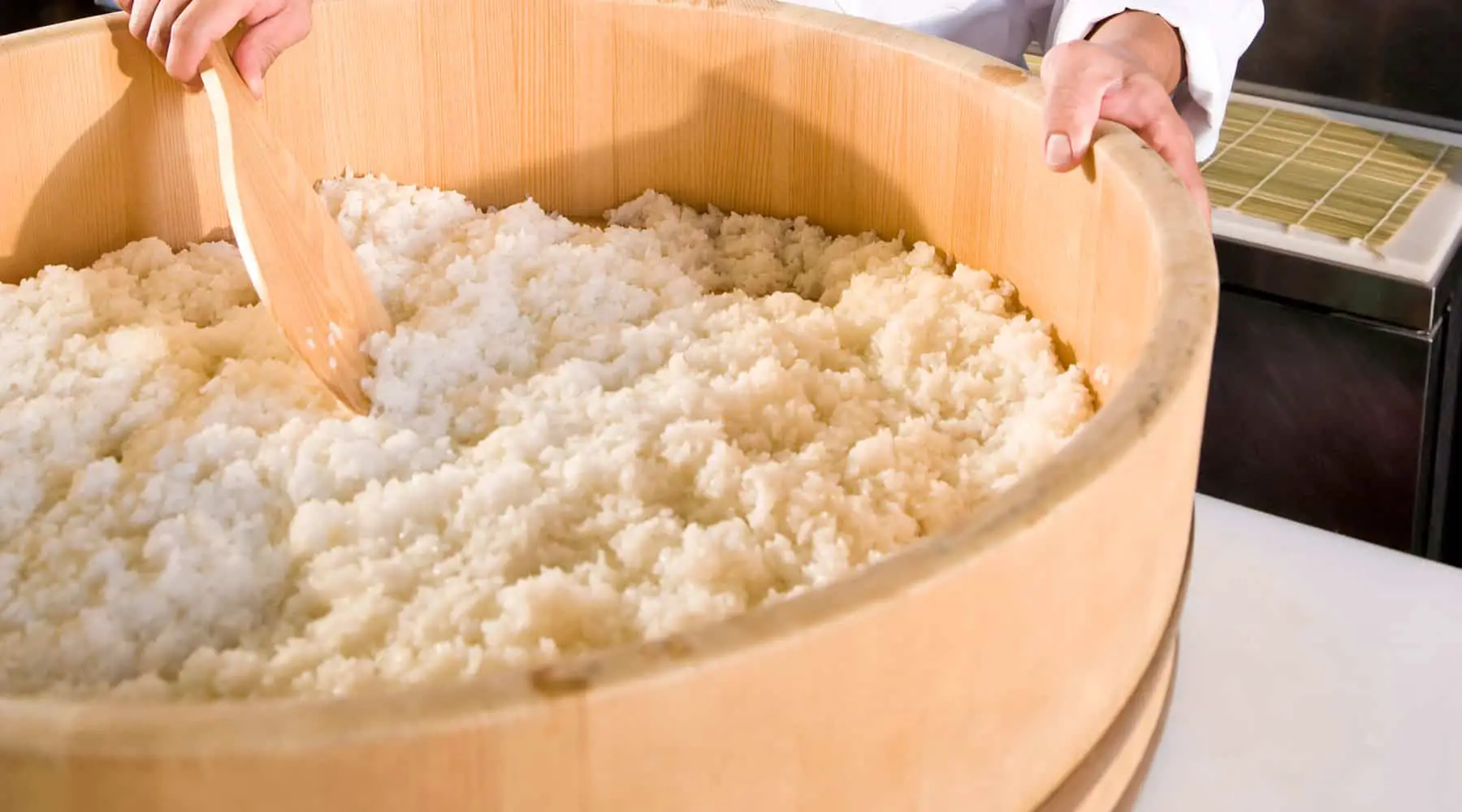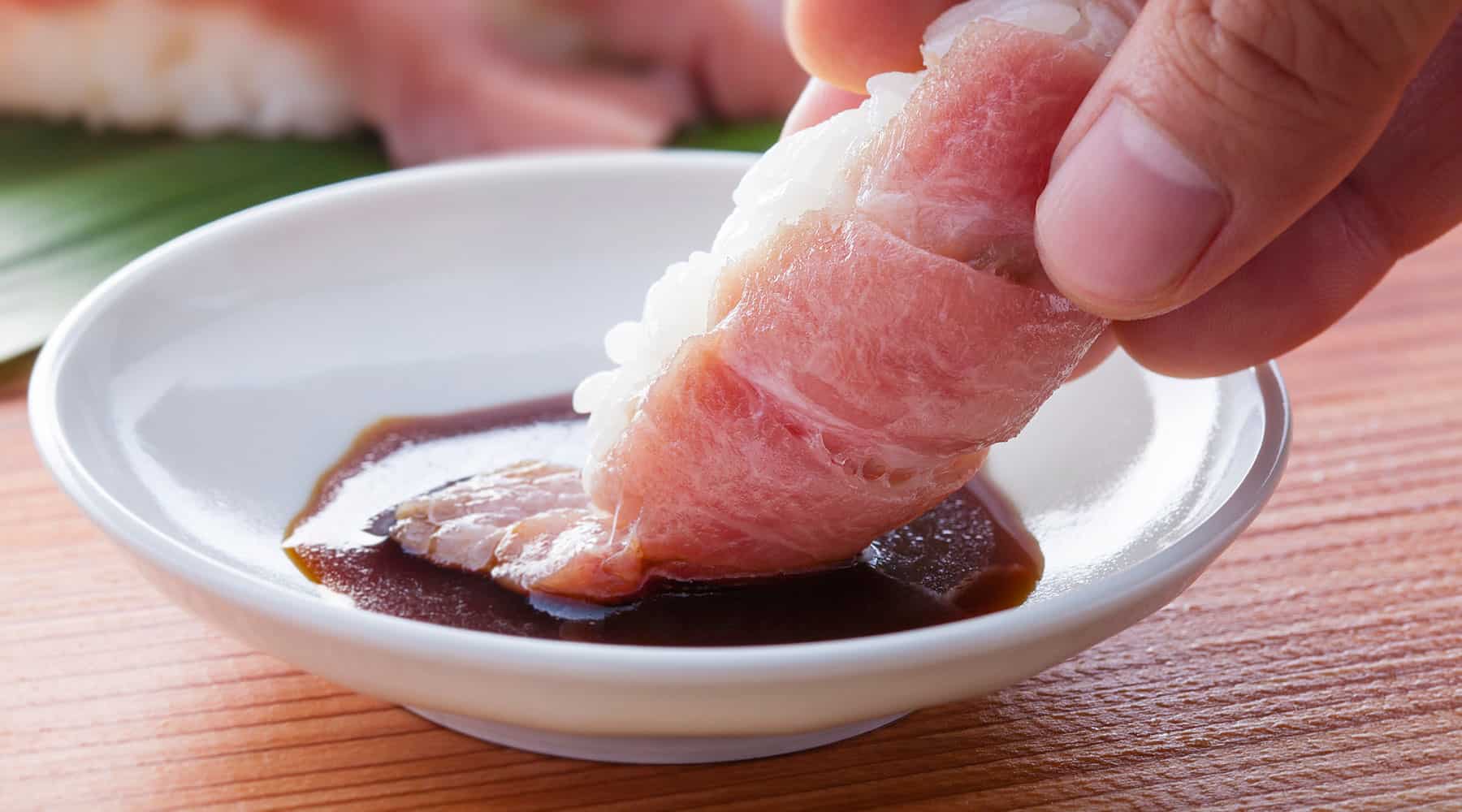Octopus sushi, also known as Tako, is one of the most easily identifiable dishes in any sushi restaurant. It’s rich purple color and and distinguishable suction cups are a dead give away.
**Disclaimer**
Sushi grade octopi are currently on a watch list for rapidly decreasing populations, world-wide. Many fisheries are unregulated or use a method called “trawling.” Trawling refers to dragging a large net across the ocean floor. This method is notorious for destroying ocean habitats and it is recommended to avoid at all cost. Unfortunately, it is almost impossible to tell where the octopus came from.
If you can trace the origin, Spain has the most reputable octopus fisheries for using sustainable techniques called “pots.” Pots are ceramic or plastic jugs that fishermen drop to the ocean floor for days or weeks at a time. An octopus will discover these pots and create a den inside. Fishermen will retrieve the pots with buoys, catch the octopus, and return the pots immediately. This technique promotes throwing the young back, fishing without bycatch, and causing as little harm to the ocean floor as possible.
In the event that you can find an octopus that was responsibly obtained, here is what you will need for the tutorial:
- Cutting board
- Sharp knife
- Plastic wrap or food service film
- Rice
- Nori
- Tako (octopus that has been boiled and brined)
In many cases, the octopus must be purchased whole. Cutting the tentacles can be tricky, so I’ll leave that for the video tutorial (coming soon).
Let’s assume that you have purchased a single octopus tentacle and you are ready to start slicing for nigiri.
Cutting for nigiri:
Much like cutting fish for nigiri, octopus sushi should be cut at a similar angle. It is important to note that since the octopus tentacle will vary is size and width, you must adjust your knife position and angle accordingly to achieve similar results.
- Starting with the end that was attached to the octopus, make an initial cut to establish your 30-45 degree angle. This will be your guideline for future nigiri cuts.
- Lay the tentacle vertically, with the wider end away from you, or diagonally (according to personal preference. I typically prefer diagonally)
- Cup your hand over the top of the tentacle and use your fingers to guide your knife’s angle (this will be demonstrated in a video soon).
- Cut from the heel of the blade to the tip- making sure to make one, smooth cut.
- Repeat the above steps until you have the desired amount of nigiri slices.
Once the nigiri slices have been cut, there is an additional step that only applies to octopus sushi: you must tenderize the meat before serving. From here, you can determine whether or not the slices will be served as sashimi or nigiri.
- Lay out each slice of octopus
- Using your knife, gently tap the knife’s edge along the length of the slice- using a chopping motion. Be careful not to apply too much pressure and accidentally cut through the slice. This is a delicate, fast paced step.
- Repeat these steps for each side of all of the sashimi and/or nigiri slices
At this point, you are ready to put the octopus onto the rice ball and serve! You can choose to use a seaweed belt or leave it as is. Personally, I think the seaweed belt adds a bit aesthetic appeal and flavor. To make a seaweed belt, cut the nori into thin strips and wet one side. Wrap the belt around both the rice ball and the octopus, making sure to have the wet tip end up on the bottom.
I have some slices that don’t look presentable enough to use a nigiri OR sashimi ! What can I do with the scraps?
That’s a great question. With almost every kind of fish you use, it is perfectly acceptable to dice the “scraps” and use them in nigiri boats! I like to add a splash of sauce when making nigiri. For octopus nigiri boats, try using ponzu to add a bit of extra flavor.
Here is some interesting facts about octopus sushi:
- Octopus sushi has above average levels of cholesterol- about 41mg per 3oz serving.
- Octopus, in general, is a fantastic source of iron. On average, each 3oz serving had approximately 25% of your daily value of iron.
- Octopi actually have arms- not tentacles. Squid have tentacles because the suction cups are only at the end, whereas octopi have suction cups along their entire arm. I still use the term tentacles for the same reason that I still refer to Pluto as a planet- some habits never die.
- Octopi are extremely intelligent and remarkable at problem solving- making them very difficult to catch.
- Most species of octopi have 3 hearts- 2 are dedicated to the lungs and the 1 is for circulating blood
- The Japanese have an exotic method of eating small octopi live. After letting the octopus swim in a bowl of broth, the consumer prods the octopus with a skewer to provoke it to wrap around the skewer. Once the octopus has a firm grasp on on the skewer, the consumer puts the octopus as far back in their throat as possible and slides the skewer out- swallowing it whole.
- This occasionally backfires and the octopus grabs onto the inside of the consumer’s esophagus, leading to suffocation and death to both parties. In the event that the octopus makes to the stomach, it will swim around until eventually dying to the consumers stomach acid. This is considered to be a cruel way of consuming octopus and is frowned upon by certain Japanese parties and American parties alike.
- I would rank this form of eating octopi in the same caliber as eating blowfish sushi and live scorpions- also forms of exotic Japanese cuisine (more on that later).

